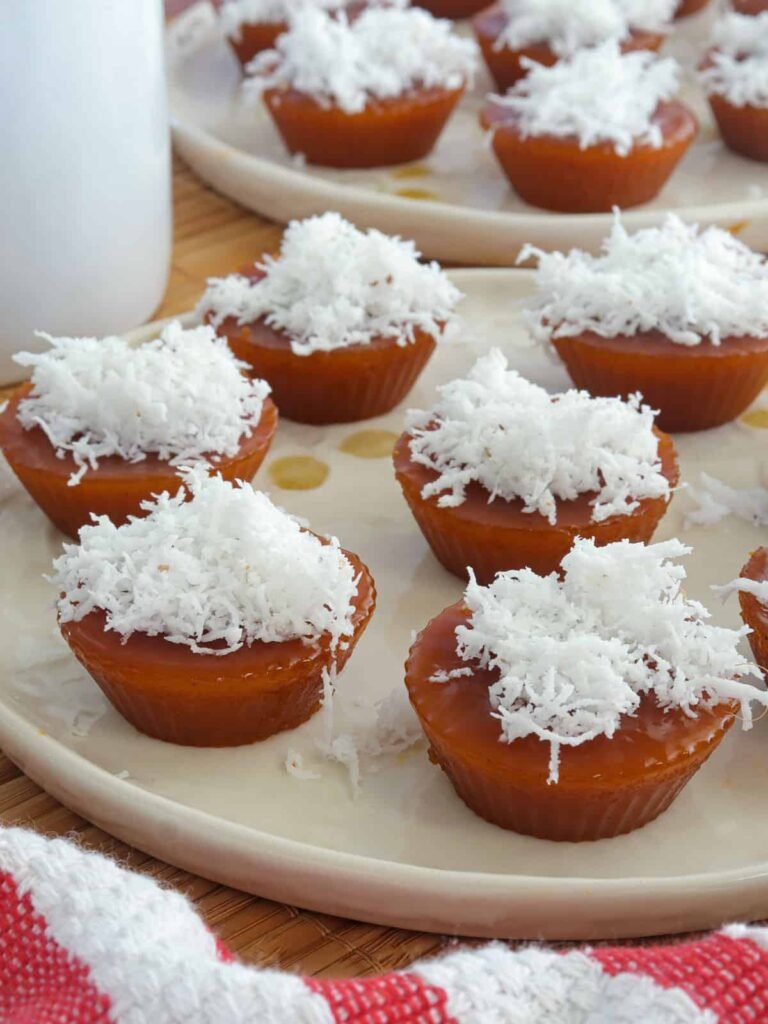[ad_1]
Carpets Cochinta is a Filipino steamed bun made from flour, tapioca flour, and brown sugar. Soft, chewy and topped with shredded coconut, they are a delicious breakfast, snack or dessert.
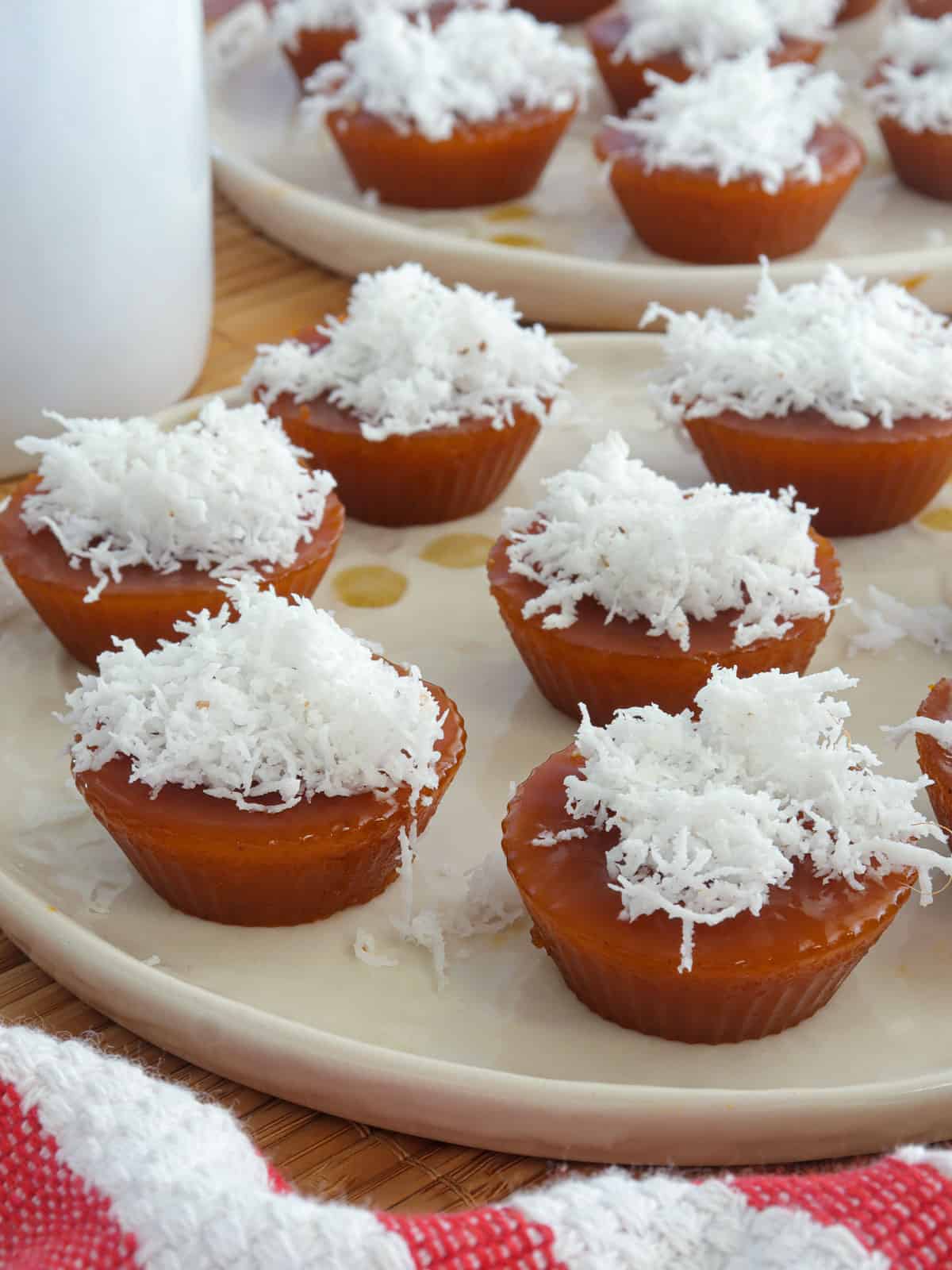
I’ve been searching for a good recipe for kutsinta or cuchinta since forever, but my research and kitchen experiences have been very disappointing. That was until last weekend, when option She posted on Facebook a photo of the kutsinta she made and how she finally nailed the recipe after two years of trial and error.
I was so excited to read her post that I messaged her as fast as my short fingers could type! I’m not sure about the time difference between California and Vancouver, where she lives, but I was happy that she responded with the recipe and had me on my kutsinta-making project in thirty minutes. Thank heavens for wonderful friends 🙂
I made a few steamed buns according to her method, and I had to agree; She really nailed it! While most recipes I’ve encountered in the past use rice flour, her version uses all-purpose flour and tapioca flour, which, along with the addition of lye water, produces the soft, chewy texture I love.
Are you in the mood for more puttu recipes? Try this easy puto with lots of cheese and puto lanson made with grated cassava. Enjoy!
Note the ingredients
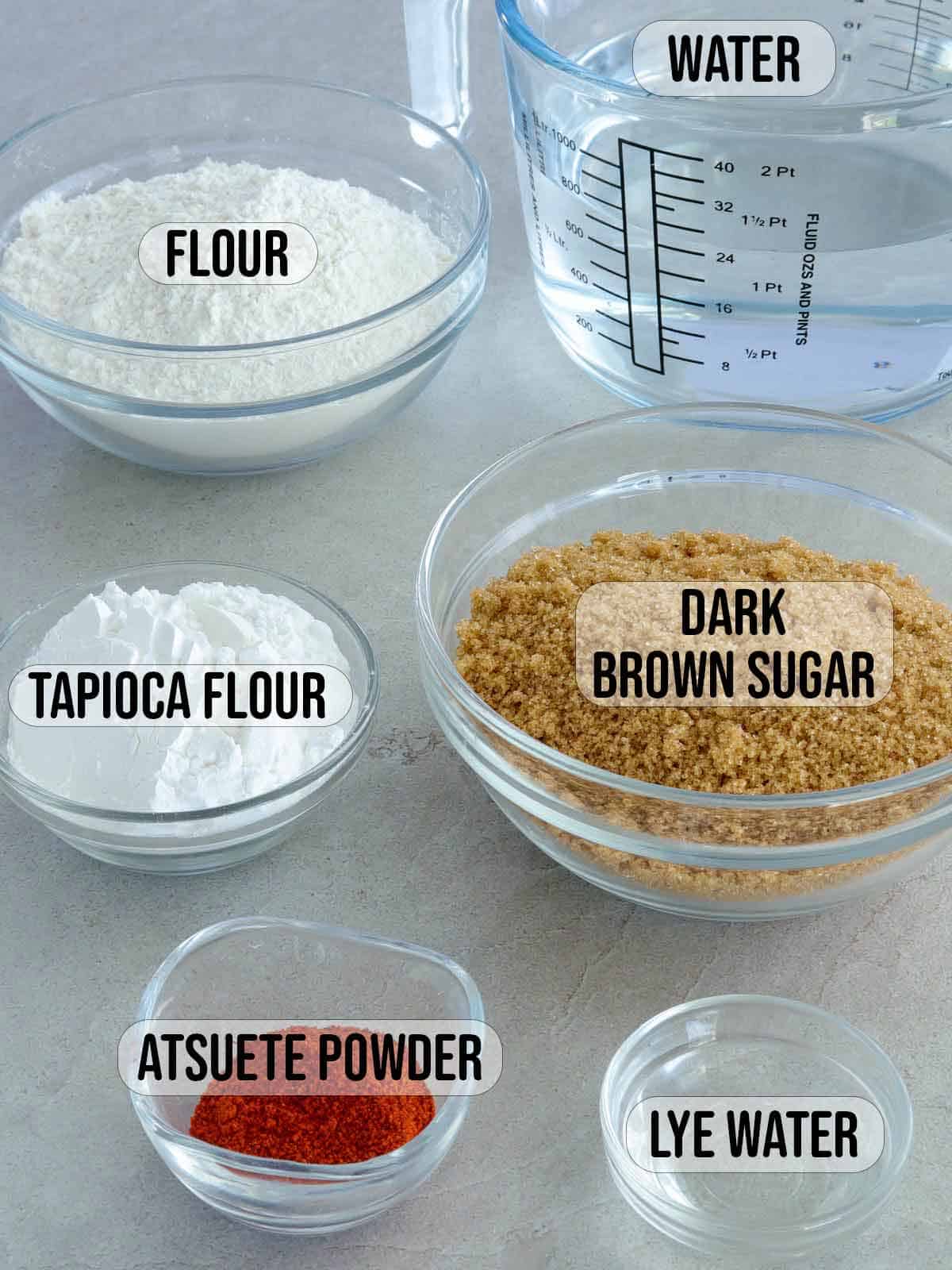

- precise-The recipe uses a blend of all-purpose tapioca flour for a soft, chewy texture.
- Brown sugar– Adds color and sweetness
- waterThe ratio of flour and liquid in the recipe gives the consistency I like. Less water will result in a firmer cochinta, and more water will create a softer consistency.
- Atsweetie/Annatto powder– Enhances color. You can use more or less depending on the depth of color desired and the brown sugar used. Note that the color will deepen as the mixture cooks.
- Food grade Lye water– Known locally as the beard. It smoothes the texture for a chewy feel and enhances color. Add it sparingly as it can impart a bitter taste.
Kitchen cooking process
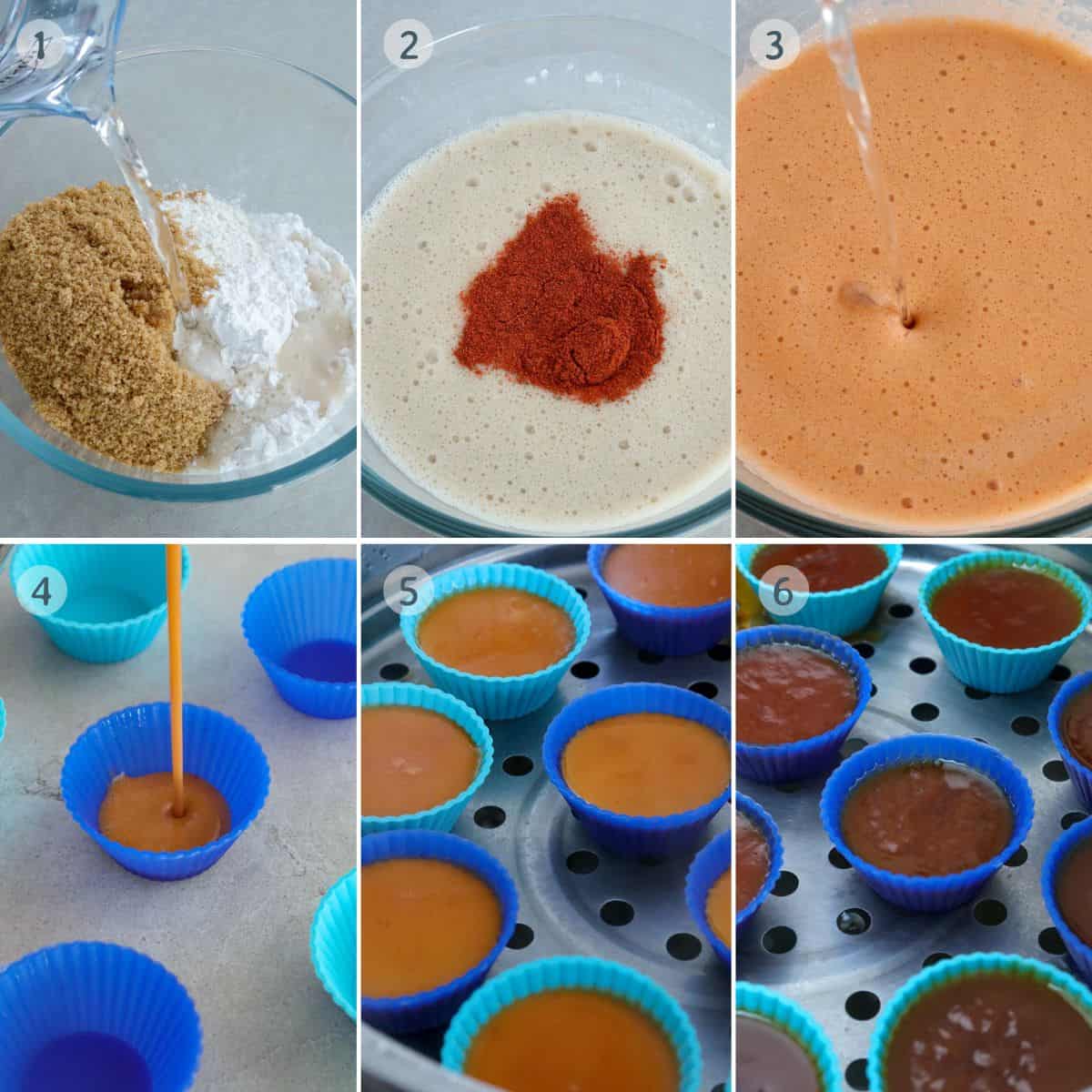

- Place the flour, tapioca flour, sugar, and water in a large bowl, and stir well until dissolved and mixture is smooth.
- Add the atsoite and stir until it is well distributed and obtains the desired color.
- Add the lye water and stir.
- Fill silicone molds to about ¾ full. If using tin molds, lightly grease the inside with melted butter to make it easier to remove the steamed kutsinta.
- Fill the steamer with water and leave it on low heat. Arrange the filled molds in a single layer on the steamer basket and steam the kutsinta mixture until combined.
- Remove from heat and leave to cool. Gently remove the steamed cake from the molds, then garnish with grated coconut.
Useful Tips
- Steam over low heat to prevent the kutsinta from sinking in the middle.
- This is a small cochinta. The recipe yield depends on the size of the molds you use.
- Stir the mixture before pouring it into the molds, as flour tends to settle to the bottom.
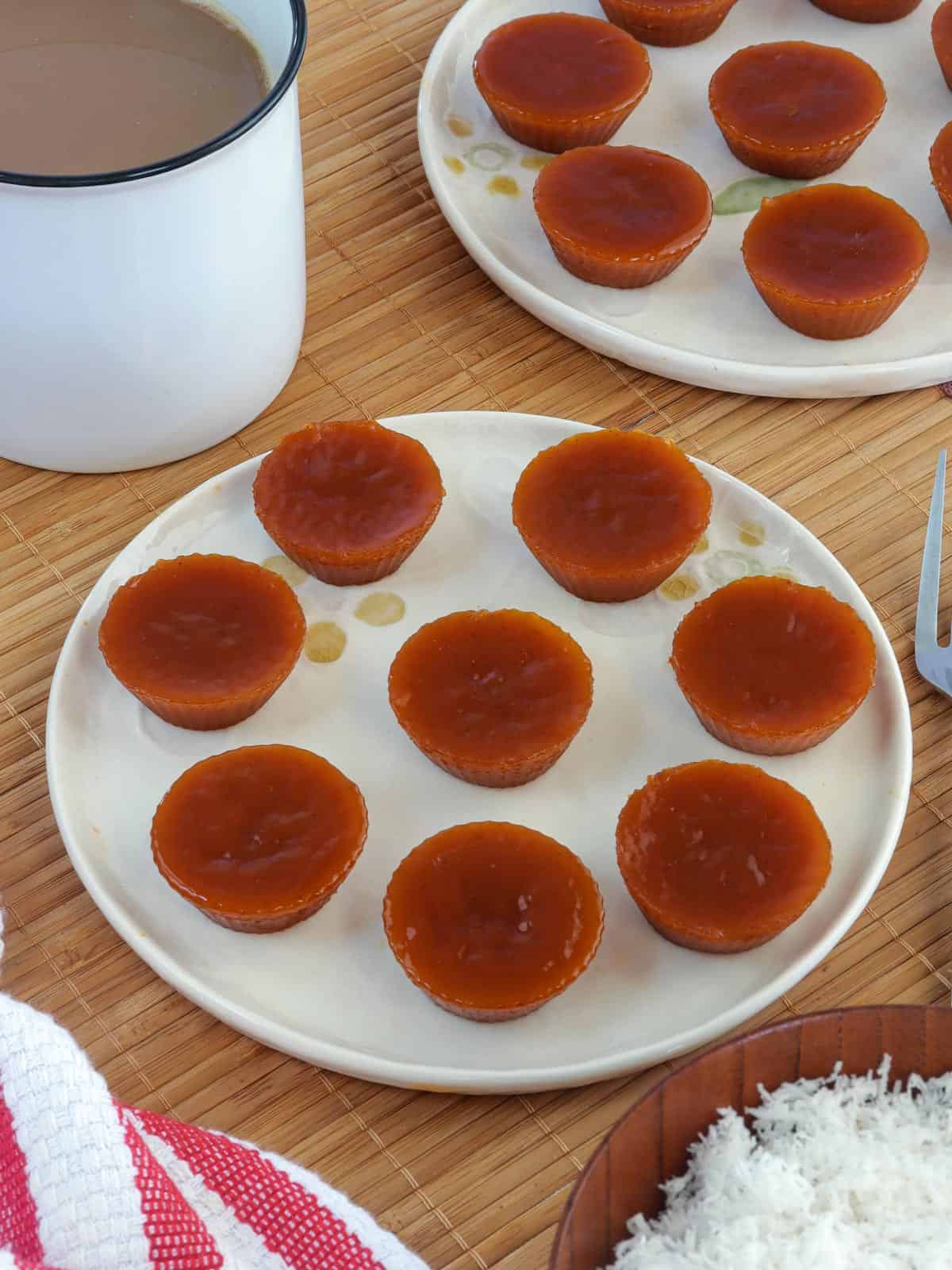

Flavor differences
- Obi– Use white sugar instead of brown sugar, omit the atueti powder, and add a few drops of yup extract to the mixture.
- black– Use white sugar instead of brown sugar, omit the atsoite powder, and add a few drops of black food coloring to the mixture.
- Pandan– Use white sugar instead of brown sugar, omit the atueta powder, and add a few drops of pandan extract to the mixture.
Frequently asked questions
What does the lye water in Kutsinta do?
Food grade lye water is a strong alkaline solution used in various cooking processes, such as curing and baking. It is a key ingredient in making kutsinta or pichi pichi, as well as Chinese mooncakes, breads, pastries, and ramen noodles. It raises the pH level of the dough for a richer color and springy texture.
If you prefer not to use lye or don’t have access to it, you can read this article about using a baking soda solution as an alternative.
How to apply and store
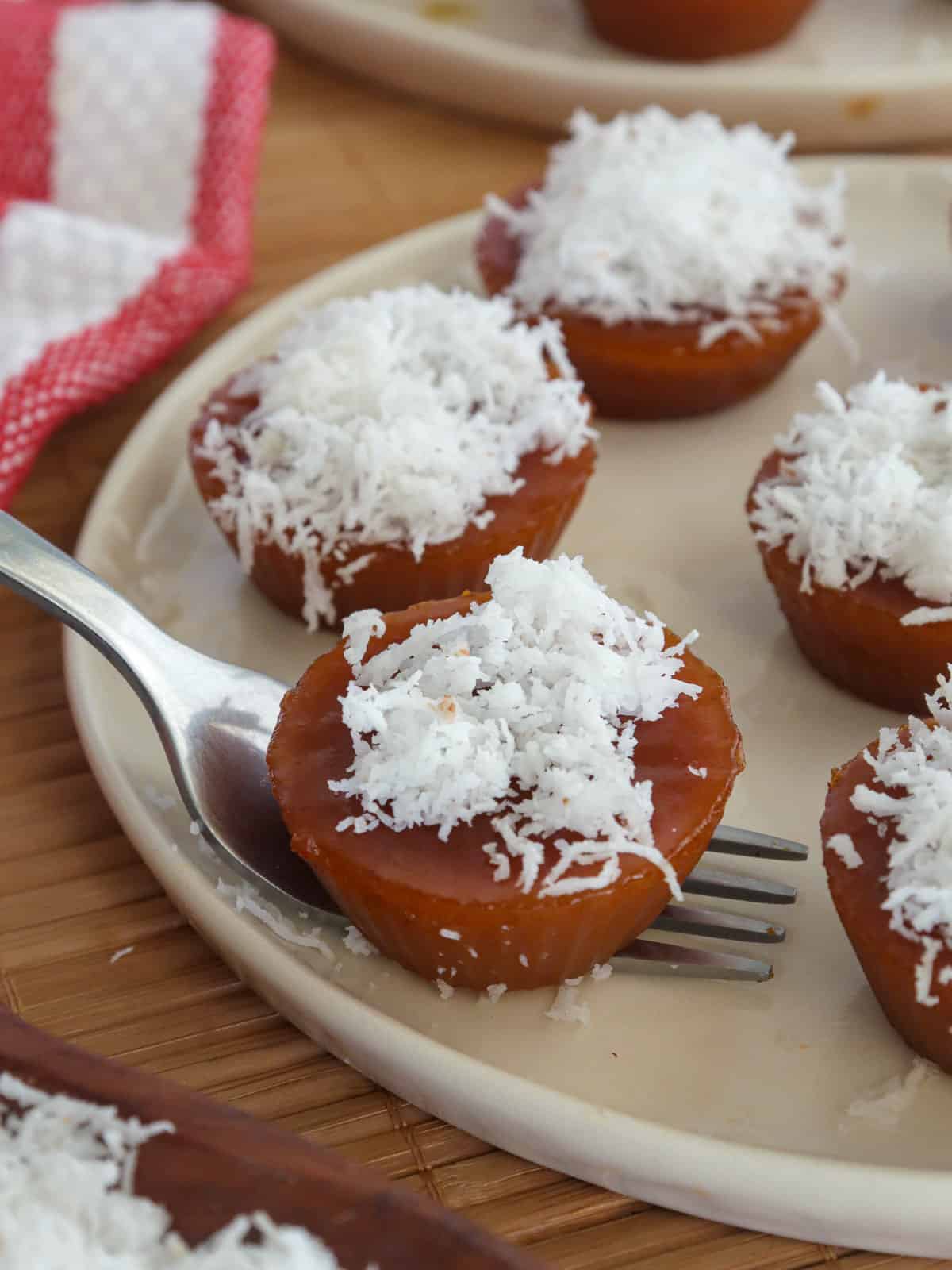

- Kutsinta is traditionally served for breakfast, midday snacks, or after-meal desserts. For a delicious meal, enjoy with hot tsokolet or iced calamansi juice!
- Garnish steamed buns with grated coconut (newg) or toasted desiccated coconut (budbud). You can skip the coconut and dip it in dulce de leche or yima.
- To store, transfer to a container with a tight-fitting lid and refrigerate for up to 3 days. For longer life, top with coconut when ready to serve
Did you make this? Be sure to leave a comment below and tag me @kawalingpinoy on Facebook and Instagram!
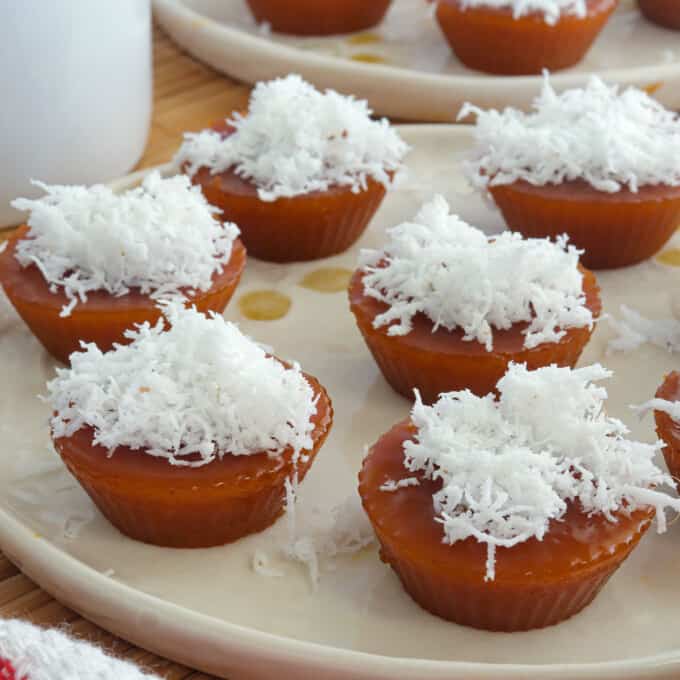

Cochinta (cochinta) are Filipino steamed buns made from flour, tapioca flour, and brown sugar. Soft, chewy and topped with shredded coconut, they are a delicious snack or dessert.
turn: Snack
Dozens
ingredients
- 1 ½ Glasses precise
- ½ cup Tapioca flour
- 1 ½ Glasses Dark brown sugar
- 3 Glasses water
- 1 Tablespoon Atsweet powder
- 1 Tablespoon Lye water
directions
-
In a bowl, mix the flour, tapioca flour, sugar and water. Stir well until it dissolves and the mixture becomes smooth.
-
Add the atsoite and stir until it is well distributed and obtains the desired color.
-
Add the lye water and stir.
-
Fill the molds to about ¾ full.
-
Add water to the steamer and leave it to boil over medium heat.
-
Steam the kutsinta for 40 to 45 minutes or until the mixture thickens. Remove from heat and leave to cool.
-
Gently remove from the molds and garnish with grated coconut.
Notes
- Atsuete is mainly added to deepen the color and you can use it more or less depending on the brown sugar you use.
- If you are using tin pans, you may need to grease the insides to make it easier to remove the steamed buns.
- Steam over low heat to prevent the kutsinta from sinking in the middle.
- This is a small cochinta. The recipe yield depends on the size of the molds you use.
- Stir the mixture between pouring into the molds as the flour settles to the bottom.
- Nutritional information is calculated at two servings per serving.
video


Nutrition information
Calories: 89Calories, Carbohydrates: 21g, sodium: 5mg, Potassium: 26mg, sugar: 13g, Calcium: 14mg, iron: 0.5mg
This site provides approximate nutrition information for convenience and as a courtesy only. Nutrition data is collected primarily from the USDA Food Composition Database, whenever available, or from other online calculators.
[ad_2]

